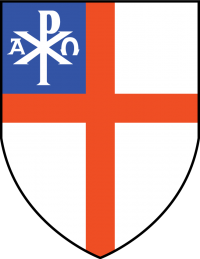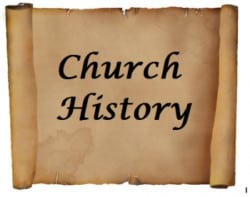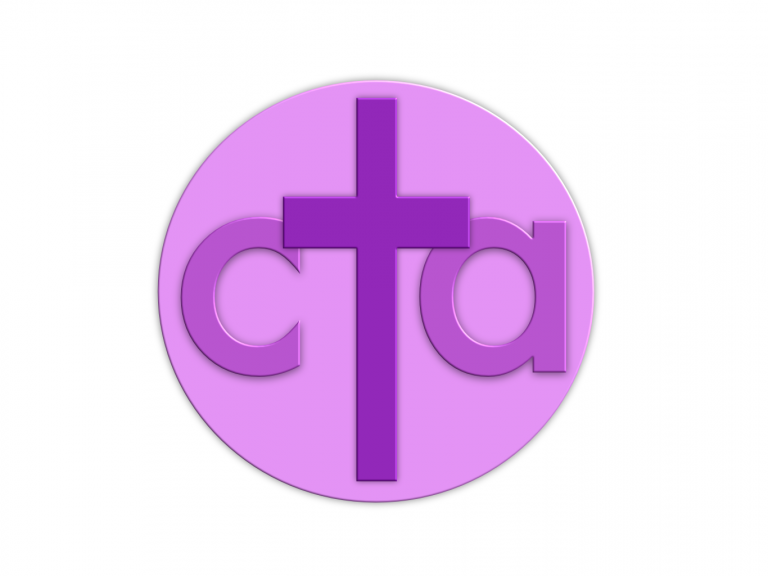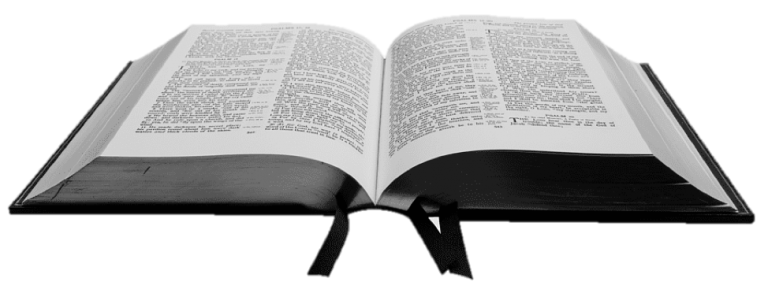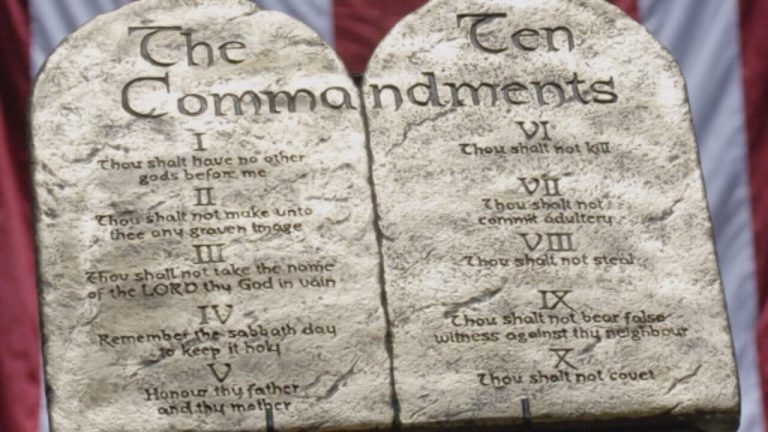Confirmation Adult Manual 2019 edition volume 4 of 10
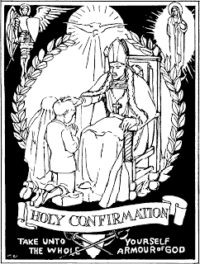
CHAPTER 4
BOOK OF COMMON PRAYER (1928)
THE SACRAMENTAL LIFE: PART I BAPTISM AND HOLY EUCHARIST
Introduction:
Sacramental symbols draw on our salvation history and reflect the role of the Church as a Sacrament of God’s presence in the world. God performs the Sacraments with ministers as God’s human agents. Sacrament comes from a Latin word (sacrare) meaning holy. Anglican definition of a Sacrament is:
“The outward and visible sign of an inward and spiritual grace given unto us; ordained by Christ himself (Book od Common Prayer page 292 … as a means whereby we receive this grace, and a pledge to assure us thereof.”
The Sacraments of Baptism and Holy Eucharist are grounded in scripture and essential for all Christians. Marriage, ordination, penance, and unction are called sacramental rites and are not essential for all Christians, but impart strengthening grace for specific situations in life.
The actions of the Sacraments confer grace to live sacra-mentally in the world. Five things are required for a sacrament to be recognized or valid:
The Matter is the outward and visible sign of the sacrament.
The Form is the action required to perform the sacrament (basically the prayers and ritual used.)
The Intention is the result desired – the inward and spiritual grace of the sacrament.
The Subject is the person (persons) who is (are) to receive the sacrament.
The Minister is the person who is to celebrate or administer the sacrament.
Some sacraments may be celebrated only by a bishop, others by priest, and still others by any baptized Christian.
Baptism (1928 Book of Common Prayer Page 273:)
The Matter is water and the Form is three fold name and pouring or water or immersion. The intention is to give remission of sins and a new life, the subject is anyone not already baptized, and the minister can be any Christian. Infants become members of Christ’s family through Baptism. Parents and godparents make the baptismal promises on behalf of a child being baptized and promise to support the child’s growth in faith. Baptism is performed only once for an individual. We live our Baptism by fulfilling the promises made.
Holy Eucharist (Book of Common Prayer page 296:)
The Matter is the Bishop’s hand and the Form is receiving the gift of the Holy Ghost. The intention is to give the gift of the Holy Ghost for lay ministry, the Subject is any baptized Christian and Minister is a Bishop. Confirmation completes the baptism and conveys the sevenfold gift of the Holy Spirit. Confirmation implies a full knowledge of the importance of the Eucharist and the essentials of the Christian Faith. A person confirmed by a bishop within the Apostolic Succession from another branch of the Catholic Church is received into the Anglican Faith by our Bishop.
The Eucharist is the regular duty of all Christians to receive frequently and was instituted at the Last Supper with His command to “This do as oft as ye shall eat/drink this in remembrance of me (I Cor 11:23-16.) The Matter is bread and wine and the Form are the words of the consecration together with the rest of the prayer. The Intention is to do what Christ did (and command us to do) at the Last Supper. The Subject is any baptized informed and confirmed Christian with the minister being a Bishop or Priest. The Holy Eucharist signifies the Body and Blood of Christ (The Real Presence), truly present in a way that we cannot explain. For Anglicans, the Holy Eucharist is not simply a memorial but a spiritual reliving of the one sacrifice of Christ on the cross. It is the spiritual food of the most precious Body and Blood of our Saviour, Jesus Christ, and incorporates us into the mystical Body of Christ. Through the Holy Eucharist, the Church is unified with Christ and becomes a sign to the world of Christ’s redeeming sacrifice.
Holy Orders: The sacrament of the ministry or ordination.
The Matter is the Bishop’s hand and the Form is Receiving the gift of the Holy Ghost. The intention is to set a man apart for the work of the ordained ministry. The Subject is any baptized and confirmed male Christian and the Minister is a Bishop. Ordination may be done only once because it applies a change of character of the Subject through the action of the Holy Spirit.
Holy Matrimony:
Utilizes the Matter of a Handclasp and its Form is of The Promise. The Intention is to be a faithful spouse. The Subjects are the baptized Christian Man and Woman and the Minister is the marrying couple. Matrimony is a permanent body between the couple and represents the relationship between Christ and His Church; meaning that the husband is supposed to act toward his wife as Jesus acts towards the Church, and the wife behaving toward her husband as the Church acts towards Christ. This relationship allows for happiness and fulfillment together.
Penance (confession) has
The Matter the penance itself and the Form “I absolve thee in the Name of.” The Intention is to declare forgiveness of sin. The Subject is any Baptized Christian and the Minister is Bishop or Priest. The penance assigned is commensurate with the sin ranging from prayers for help in personal improvement to making restitution (even turning oneself in to the authorities for a felony. The confessor must never divulge a confession to a third party and cannot bring it up again to the Penitent unless brought up by the penitent under the seal of another confession.
Unction:
The Matter is Oil Blessed by the Bishop in the Form of “I anoint thee in the name of.” The Intention is to give health of body and or of spirit. The Subject may be any baptized Christian and the Minister is a Bishop or Priest. There is none other Name under heaven given to man, in whom, and through whom, thou mayest receive health and salvation, but only the Name of our Lord Jesus Christ (BCP page 314.)
| Sacrament | Matter | Form | Intention | Subject | Minister |
| Baptism | Water | 3-fold name & pouring of water or immersion | To give remission os fins and new life | Anyone not already baptized | Any Christian |
| Confirmation | Bishop’s hand | Receive the gift of the Holy Ghost | To give the gift of the Holy Ghost for lay ministry | Any Baptized Christian | Bishop |
| Order | Bishop’s hand | Receive the gift of the Holy Ghost | To set a man apart for the work of the ordained ministry | Any Baptized and Confirmed male Christian | Bishop |
| Eucharist | Bread and wine | The words of consecration toether with the rest of the prayer | To do what Christ did at the Last Supper | Any baptized, informed and confirmed Christian | Bishop or Priest |
| Matrimony | Handclasp | The Promise | To be faithful to one spouse | Any baptized Christian man and woman | The Marrying couple |
| Penance | The Penance | I absolve thee in the Name of … | To declare the forgiveness of sin | Any baptized Christian | Bishop or Priest |
| Unction | Oil blessed by bishop | I anoint thee in the name of … | To give health of body and soul | Any baptized Christian | Bishop or Priest |
The “grace” signified by the outward symbol. Taking Holy Baptism as an example, God uses the outward sign of water to confer the inward grace of new birth in Christ and forgiveness of sin.
Anglicanism seeks a balance between word and sacraments.
Historical explanation:
Symbols are integral to our understanding of the sacraments of the Church. Sacramental symbols date from the salvation history of Israel, when covenants between God and his chosen people were marked with physical signs. A rainbow marked God’s promise to Noah; the tablets of stone and the Ark of the Covenant were signs of God’s presence with Moses and the wandering tribes. Even now, the foods consumed at modern Passover meals are symbols of God’s saving acts of deliverance from bondage in Egypt.
The early Christian Church inherited, continued, and deepened this sacramental understanding of our relationship with God. The Church itself, the Christian community, is an outward sign, a sacrament of God’s presence among us. The symbols we use in our sacramental rituals are reminders of our salvation history. They also point forward to the fulfillment of God’s eternal promises.
Early in church history, St. Augustine formulated the understanding that God performs the sacraments; the minister is merely the human agent. Thus the validity of the sacrament is not dependent upon the virtue or spiritual merit of the minister performing the physical action. By the time of St. Thomas Aquinas there were seven sacraments recognized by the Roman Catholic Church: baptism, confirmation, the Eucharist, ordination, marriage, penance, and unction.
Anglicans regard Holy Baptism and Holy Eucharist as grounded in scripture and essential for all Christians. The other five, often called Sacramental Rites, are not necessary for all Christians and have a more ambiguous scriptural warrant. Nevertheless, Anglicans have no trouble referring to all seven as sacraments. Our discussion on the sacraments will therefore be divided into two sessions, one for Holy Baptism and Holy Eucharist, the other for the
Sacramental Rites.
The understanding of sacramental efficacy is another point of striking difference between Protestants and Catholics. Protestants from Luther and Calvin on ward have defined the Church around the proclamation of the Word, understood as the preaching of the Word. The Catholic tradition has understood the Church much more as the sacrament of Christ and therefore as the community practicing the sacraments. Luther held that the sacraments impart no grace that is not also found in the preaching of the Word. Calvin understood them as secondary to the Word, merely confirming God’s promises given in the Word.
The Roman Church, on the other hand, developed and maintains an understanding of all seven sacraments as objectively efficacious; that is to say, God uses them to confer emphasis from one another. The Oxford movement of the mid-19th century played a vital role in restoring the centrality of the sacraments in the Anglican Churches. Today Anglicanism attempts to hold together people who would stress one or the other. Word represents Christ in proclamation and in moral commitment; Sacrament represents Christ in communal action and through material objects. The word convinces us through our faculties of intellect and reason and may persuade us to acts of love and mercy. The sacraments persuade through motion and our five senses; they create our sense of belonging to a community reaching back in time to Christ and the apostles, and even to Abraham, and forward to the communion of saints.
During the Eucharist service two things are elevated during the service; first,
the word is elevated as the Book is elevated after the reading of the Gospel,
and secondly; the Chalice at the ‘Invocation’ in which we ask the Father to bless and sanctify His gifts with His Word and Holy Spirit, so that the Bread and Wine may become the blessed Body and Blood of His Son.
In the story of Philip and the Ethiopian eunuch (Acts 8:34-38): the eunuch hears the word, but then consents to be baptized. As well, we use both; it is not enough to preach or to be convinced so that we may attain salvation; God wants a covenanted community in a sacramental world of rainbows, handshakes, rings given and exchanged, bread and wine blessed and broken and shared. Through the sacraments, God tells us that the world is more than it appears to be, that there is deeper meaning in our surroundings, in our relationships and in our lives.
The action of the sacraments is not limited to the space in which we celebrate them. God bestows upon us the grace to carry these actions out into the world. In the Holy Eucharist, for example, we recall, relive, and continue the Incarnation Of Jesus being truly God and truly man, carrying Christ out into the world with us. In the Rite of Reconciliation, we are reconciled in our own relationship to God but we are also renewed as reconciliation people, bringing that spirit into our communities. We are not to be dividers, but builders of Christ’s Love.
In Holy Baptism, we see sacramental action in its most easily understood form. We can see, feel, and hear the water but we cannot see God’s grace; we cannot see repentance; we cannot see the community’s acceptance; we cannot see faith. Water symbolizes cleansing, drowning, and rebirth, dissolving (forgiving our sins), and the down-pouring of God’s grace. Water is common and essential for life, a precious commodity in the often desert locations where the Church was born. Through the symbol of water, the Church looks back in salvation history to Noah and the cleansing flood, to Israel’s passage through the Red Sea, and to the baptism of Jesus by John.
Even as infants, we are baptized by a community and are accepted into that community. Just as Jesus welcomed little children to come to him (Mark 10:14), the Christian family welcomes even the youngest into our household. As infants and small children are unable to make a profession of faith or to affirm the baptismal promises, parents and godparents or sponsors make these affirmations for them and promise to do all they can to nurture and encourage the child’s growth in faith. At a later time, the young adult will be able to claim this faith and renew these promises as they receive the laying on of Apostolic Hands by a Bishop in Apostolic Succession during Confirmation.
Baptism by water and in the name of the Holy Spirit is full initiation into the Christian community and is an unrepeatable sacrament. Although we are all sinners, even after baptism, there are opportunities for forgiveness and renewal in other rites of the Church. We have the opportunity to renew our baptismal promises whenever someone is baptized and in the Confirmation liturgy. At each General Confession and in the Rite of Reconciliation (Confession), we receive forgiveness of sin. In Confirmation, there is even an opportunity for a formal reaffirmation of faith with laying on of hands by the bishop.
Because each baptism is such an important part of the life of the Church family, baptisms properly take place during the major Sunday services rather than privately. The most appropriate occasions for Baptism are the feasts of the Baptism of Our Lord, the Easter Vigil, Pentecost, and All Saints or whenever a bishop is present. Through our baptism we are deputized to continue the work of Christ.
THE HOLY EUCHARIST (Mark 14:22-24; 1 Cor.11:23-26): The Last Supper:
The Holy Eucharist, like Baptism, it is a sacrament created by Christ. As such, it looks backward to the Passover meal, eaten by the people of Israel as they were preparing for their liberation from slavery in Egypt. It looks backward to the Last Supper, in which Jesus took, blessed, broke, and gave bread to his disciples in preparation for his sacrifice on the cross when he liberated us from sin and death. The words of consecration are taken directly from Holy Scripture, in which Jesus commands us to “do this for the remembrance of me.” Finally, it looks forward to the heavenly banquet.
We understand this remembrance “do this”as a re-living of Christ’s sacrifice on the cross that took place in historical time but exists eternally. His sacrifice is not repeated but is celebrated in the Holy Eucharist in our own time. Christ is not sacrificed anew but, through the power of the Holy Spirit, the Church is present at his one sacrifice in a spiritual sense. The word Eucharist comes from the Greek for thanksgiving. In Holy Eucharist we give thanks for Christ’s eternal sacrifice for us and we experience it anew.
Christ is truly present in the Holy Eucharist but the precise way (the mechanism) is a mystery. We call this doctrine the “Real Presence.” Here again, the Anglican tradition stands between the Protestant view, in which communion is often seen as only a memorial celebration, and the Roman Catholic view of transubstantiation in which the elements are believed to be materially transformed into the Body and Blood of Christ. In the Real Presence, we believe Christ is present in the consecrated elements in a special but mysterious way. For this reason, we treat the consecrated bread and wine reverently, by consuming them immediately, or reserving them, as authorized by the Bishop for later consumption.
Anglican priests do not celebrate Holy Eucharist alone—at least one communicant must be present with the priest for Holy Communion. In the Holy Eucharist, we not only remember the Incarnation and our Lord’s sacrifice on the cross, but Jesus Christ becomes truly present among us. We are united with him individually and as a Church; we continue the Incarnation as the Body of Christ. We are then charged to carry the Incarnation out into the world, to become the Real Presence of Christ in our relationships to God and our neighbor.
THE HOLY EUCHARIST
BY +Chad Jones (an Anglican perspective)
Our Lord’s proclamation of the truth of the Real Objective Presence in Saint John chapter 6 is certainly not symbolical or metaphorical, and He is not speaking in figurative terms, as the context of the Scripture makes clear.
In our day, when a 75% of American Roman Catholics do not believe in the Real Substantial Objective Presence of Christ in the Eucharist, and probably an even greater percentage of Anglicans (at least of the neo-Anglican evangelical variety) doubt and struggle with this divine truth, it is better to emphasize the corporeal and incarnational dimension of the Eucharistic Presence rather than place emphasis on the more representative aspects of the Eucharistic Mystery.
One can never affirm or assert too strongly the fact that the Blessed Sacrament is Jesus Christ, a Divine Thing, the glorified Body and Blood of Christ, the total Person of Christ both God and Man, under the consecrated elements of bread and wine, so that the fullness of Our Lord’s human nature, as well as His Divinity, is present under the form of the sacred species, in an abiding and permanent way after Consecration. The bread and wine are changed into the Body and Blood of Christ.
We should reject as contrary to Holy Tradition the doctrine of memorialism, which makes the Eucharist a mere mental psychological act of remembrance devoid of presence and grace, and the doctrine of virtualism, which holds that only the believing faithful receive the subjective grace or power of the Body and Blood through the elements, but not the Thing Itself objectively and substantially, essentially present in the elements.
Historically, Anglicanism has, at sundry times, been confused by these two insufficient doctrines on the Eucharistic Presence, and it is up to us to clarify the biblical and patristic truth for our own tradition.
Since the Reformation, Anglicans have insisted, with the consensus of the early Fathers, Saint Irenaeus of Lyons, Saint Theodore of Mopsuestia and Saint Theophylact especially amongst them, that the materiality of the Bread and Wine remains in its original physical state after Eucharistic Consecration, but that materiality is changed and converted in its essence, so that to the material of bread and wine, joined by Consecration, so that the supernatural totality of the Incarnate God-Man, by a ‘hypostatic union,’ is a Personal Union extending to the Incarnation in a sacramental way, thus a sacramental unity of the outward and visible sign with the Divine Thing, Our Lord, Who is signified and contained in the sign.
Upon Consecration, the bread and wine retain their natural physical properties of smell, taste, touch, molecular and atomic structure. But in their essence, in their being, the elements are converted and transformed into Christ on a supernatural level.
The Holy Ghost, through the Consecration of the Mass, effects a sacramental change, an ontological change, in the forms of bread and wine on a supernatural metaphysical level, so that the outward forms are identified with and become the Spirit-filled Body and Blood of Christ in an ‘immaterial’ but essential manner. The Body and Blood of Christ localized under the Eucharistic species are the glorified human nature of Christ in His Resurrection-life, His risen state. Christ is bodily present in the Eucharist, and the Eucharist is the actual Body and Blood of Our Lord. But the Body and Blood are not carnal or mortal, but glorified and divined.
The Body and Blood of Christ in the Eucharist are the Body and Blood of His mighty Resurrection and glorious Ascension, a supernatural Body vivified by the Holy Spirit First Corinthians Chaper 15. verse. The a-fore-described doctrine is plainly laid out in the Prayer Book Catechism, the Prayer Book Offices of Instruction and in the Prayer Book Eucharistic Liturgy, as well as Articles of Religion 28 and 29. All communicants receive the outward and visible Sign (the species of the Sacrament) and the Thing Signified (Our Lord’s true Body and Blood); however, only the faithful receive the Benefit or virtue of the Sacrament, as the wicked receive not benefit but condemnation (I Corinthians 11.27-29).
We do indeed need to be careful about Eucharistic language, so as to avoid on one hand a mono physiticism, wherein the elements are believed to be destroyed and absorbed into Christ, (a medieval form of transubstantiation condemned in the Articles which overthrows the nature of sacraments, since a sacrament has to have a real outward sign and not just a phantom or appearance) and a Nestorianism found in Calvinism and ‘reformed’ Protestantism on the other, wherein the sign is divorced and entirely separated from the Divine Reality (so that Christ is not really in the very elements).
Saint Irenaeus says, ‘in the Eucharist there is an earthly thing and an heavenly thing,’ hence, the outward signs of Bread and Wine and the Thing Signified, the Body and Blood of Our Lord.
Other Fathers describe the Eucharist as the prolongation of the Incarnation, a Mystery like an iron thrust into the fire – the iron does not lose its own properties or reality, but it takes on the reality and properties of the fire. Both remain complete in themselves and yet are perfectly united, and each takes on the property of the other, True God and True Man in the Incarnation, earthly elements and the Person of Christ in the Eucharist. The consecrated Elements are not destroyed, but elevated, not replaced, but perfected into a new Thing. Grace builds upon nature, and does not destroy, but perfects, nature.
We say all of this to concur with what many authors basically teach about the Real Presence, while carefully governing how we would assert that same truth in language consistent with the Scriptures and Fathers. The Real Presence is quite beyond our intellectual explanation and understanding because it is absolutely unique, just as the Trinity and the Resurrection are unique. A unique reality is impossible entirely to comprehend.
That there is:
1. a supernatural, glorified, metaphysical yet corporeal (of a Body, bodily) Presence of Our Lord’s Incarnate Person in the Eucharist, the Risen and Exalted Lord,
and 2. a Change in the Eucharistic Elements upon Consecration, is beyond doubt for all Catholic Christians; as Anglicans we believe we cannot attempt dogmatically to define the exact process of how the Presence comes about at Mass without adding to the Catholic Faith.
We cannot rationally explain the inexplicable or define the indefinable. The Real Presence is Mystical – the ultimate Holy Mystery. The Real Presence is more real than that found in our own mortal material physical plane, because it is nothing less than the Risen Christ, but it is not material as understood in the limited field of our empirical experience.
Transubstantiation as officially defined by the Roman Church at Trent and as explained by Saint Thomas Aquinas is a laudable effort to explain the ‘how’ of the Eucharistic Change and Conversion, but it is only a theory, or a compilation of theories in fact, based on Aristotelian metaphysics. Because it is a theory, and not directly revealed in Holy Scripture, it cannot rise to the level of a dogma. The specific definition of transubstantiation provided by the Council of Trent is not condemned by the Articles of Religion or Anglican formularies (for the Articles predated Trent).
But other versions of the idea not endorsed by Trent, false notions popular in the medieval era, are rightly disowned by us. The Roman, Eastern Orthodox, and traditional Anglican Churches all agree that Christ is truly and substantially under the species of bread and wine in the Eucharist. We disagree only on matters of semantics/language and on the effort to define how the Mystery takes place.
Here is a much more succinct version of what I wrote!
Anglican Catholics believe… The Eucharist is different from all other Sacraments, in that all other Sacraments convey or communicate the grace or life of Christ to those who receive them, but in the Blessed Sacrament, we do not only receive grace – but Christ Himself. Jesus Christ is the Blessed Sacrament, for It is His Most Blessed Body and Blood, present really, truly, and objectively in and under the outward form and elements of Bread and Wine (First Corinthians Chapter 10 verses 16 thru 17). The Eucharist is the Lord Jesus, True God and True Man, the whole and entire Person of Christ, present in a heavenly, supernatural, glorified manner, truly present under the forms of the Sacrament. Jesus Christ is present in the Eucharist in His glorified Body and Blood, the Resurrection-Body (I Corinthians 15.44), given to us as heavenly food and drink, as spiritual nourishment for our souls and bodies, to unite us with Himself in His own incarnate human life.
Summary:
As these other Sacramental Rites are means of grace, just as Holy Baptism and Holy Eucharist are, but unlike the two great sacraments, they are not necessary for all persons. In the Sacramental Rites God through His Church addresses the needs of the people in different life circumstances and passages.
The Anglican Church welcomes infants into the household of God by Holy Baptism. Because they are not yet able to enter into the Baptismal Covenant for themselves at that age, their parents and godparents make the promises and affirmation of faith on their behalf. Confirmation evolved allowing those baptized at an early age to make a mature profession of faith and commitment to Christ. In this sacrament, we receive the laying on of hands by a bishop, linking us to the apostles in an unbroken chain. We receive strength from the Holy Spirit to live the Christian life according to our baptismal promises and reiterated in the confirmation liturgy.
Prerequisites for confirmation are Holy Baptism, instruction in the faith, and a mature intention to make a public profession of faith and commitment to Christian responsibility. Young people who were baptized as infants are typically confirmed when maturity is obtained, and this in times past was between the ages of 12 and 16. The Anglican Tradition recommends that confirmation be deferred until greater psychological maturity and independence for this important step. Baptism incorporates you into the body of Christ’s Church, and Confirmation prepares you to take Christ out into the world to others.
